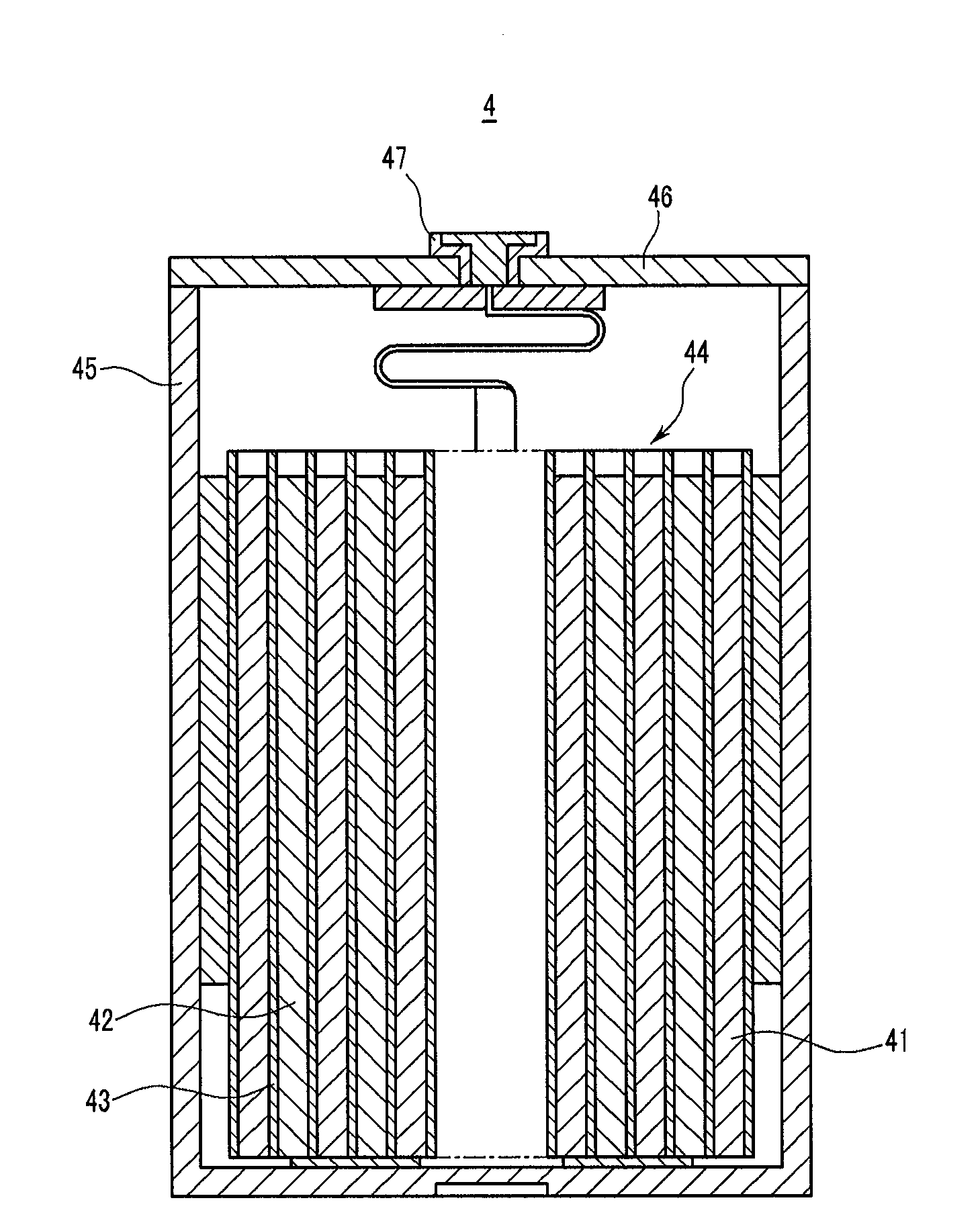Negative active material for lithium secondary battery, method for preparing the same, negative electrode comprising the same, and lithium secondary battery comprising same
a lithium secondary battery and negative active material technology, applied in the manufacture of cell components, final product manufacturing, electrochemical generators, etc., can solve the problems of battery including it being fired and blown off when the battery is charged, lowering the energy density per unit volume, and reducing the density of the substrate, so as to improve the charge and discharge efficiency of the rechargeable battery, the effect of effective regulation
- Summary
- Abstract
- Description
- Claims
- Application Information
AI Technical Summary
Benefits of technology
Problems solved by technology
Method used
Image
Examples
example 1
[0090]A first particle precursor, that is, a flake-shaped graphite piece having a particle diameter of about 10 μm, was mixed with Si particles having a particle diameter of about 70 nm in a weight ratio of 90:10 in a wetness process and thereafter, dried. Then, the mixture was inserted into a rotor mill of a blade method to prepare a sphere-shaped and assembled first graphite-silicon particle by blade-spinning power and frictional power.
[0091]The first particle was put in a pressure container, and argon gas was inserted therein. Then, they were pressed with 100 atmospheric pressures, obtaining a secondary particle.
[0092]The secondary particle and coal-based pitch were mixed in a weight ratio of 80:20, heat-treated under an argon atmosphere at 1,000° C., and distributed, preparing a negative active material having an average particle diameter of 25 μm.
example 2
[0093]Another negative active material was prepared in the same method as Example 1 except that a first particle precursor, which is a flake-shaped graphite piece having a particle diameter of about 10 μm, Si particles, and NiSi2 were prepared into a Si-containing composite particle having a particle diameter of about 0.3 μm. The Si-containing composite particle and Ni20Si80 particle were mixed in a weight ratio of 70:30 in a wetness process.
example 3
[0094]A first particle precursor, which is a flake-shaped graphite piece, and Si particles having a particle diameter of about 70 nm were mixed in a weight ratio of 70:30. The mixture was mixed with a tetrahydrofuran solution in which PVC was dissolved in 100 wt % of the mixture, then, agitated in a ball milling method, and vacuum-dried at 100° C. for 6 hours, preparing a composite.
[0095]The prepared composite was inserted into a rotor mill of a blade method, obtaining a first particle by blade-spinning power and friction power of a blade.
[0096]Then, a negative active material was prepared in the same method as Example 1 except for the process of obtaining the first particle.
PUM
 Login to View More
Login to View More Abstract
Description
Claims
Application Information
 Login to View More
Login to View More - R&D
- Intellectual Property
- Life Sciences
- Materials
- Tech Scout
- Unparalleled Data Quality
- Higher Quality Content
- 60% Fewer Hallucinations
Browse by: Latest US Patents, China's latest patents, Technical Efficacy Thesaurus, Application Domain, Technology Topic, Popular Technical Reports.
© 2025 PatSnap. All rights reserved.Legal|Privacy policy|Modern Slavery Act Transparency Statement|Sitemap|About US| Contact US: help@patsnap.com



